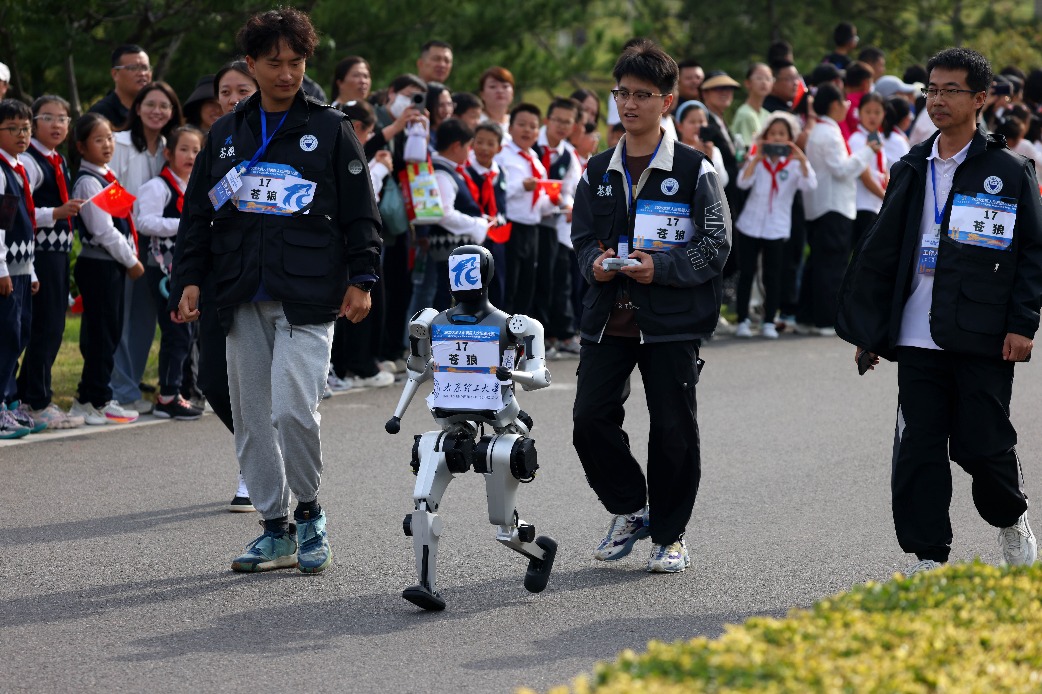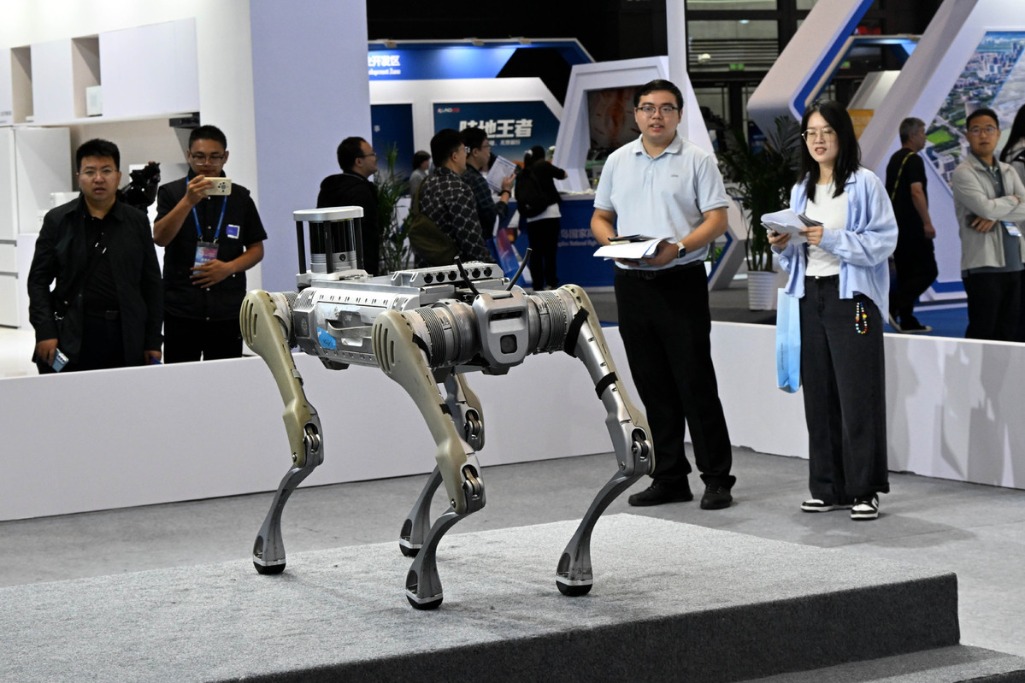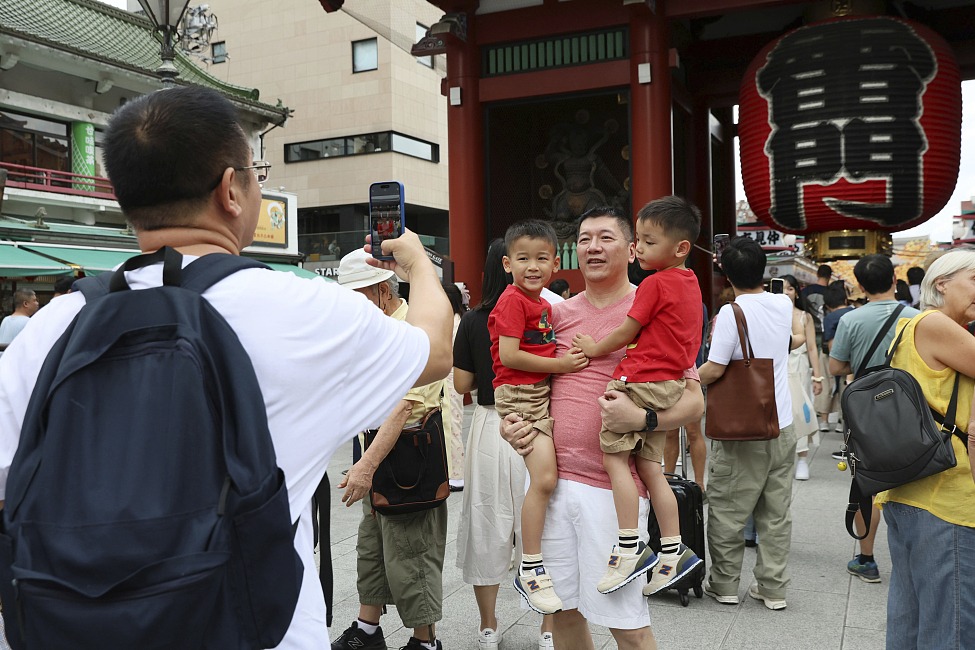Many paws driving pet economy growth
Closer emotional bonds between the adorables and younger consumers creating niche market in China


More friends
The pet economy can be a useful lever for brick-and-mortar businesses to optimize their tenant mix and rethink their operations, experts said.
"From a transformation perspective, pet-related offerings can provide a point of differentiation. By introducing pet retail and services, creating dedicated activity zones, or hosting pet-themed markets and events, malls can attract pet-owning customers while also boosting spending in dining, retail and other related areas," said Sheng Xiuxiu, research director of JLL East China.
"Of course, each project should tailor its approach based on its own conditions and positioning."
Shanghai Suhe MixC World, along the Suzhou Creek, is a prime example of the pet economy trend. By integrating pet stores, services, retail, and boarding, the mall has made "pet-friendly" a defining part of its brand.
"Since our opening in 2022, the mall has positioned itself as pet-friendly. Being pet-friendly has become a defining label and an important part of our identity," said Huang Jingqin, general manager of Shanghai Suhe MixC World.
"Currently, about 80 percent of our restaurants offer outdoor seating areas for visitors with pets, and we've also set up dedicated pathways and elevators, supply stations, and waste disposal points," Huang said.
According to Huang, when the complex first opened in October 2022, pet-related planning mainly focused on including relevant businesses, and after June 2023, they shifted toward more refined operations, placing greater emphasis on the needs from a pet owner's perspective.
"After this adjustment, our foot traffic in early 2025 rose 30 percent year-on-year, and the pet-friendly strategy clearly played a role in that growth," Huang said.
The Bund Finance Center (BFC) is another pet-friendly commercial project. Its environment has attracted a large number of pet-owning families and pet lovers, with 2,600 members making a total of 7,000 purchases on pet-related services this year.
"Since opening in 2019, we have been exploring pet-friendly concepts. At present, about 1,500 square meters are dedicated to pet-related businesses, covering more than 60 brands at 11 stores. After a wave of new openings between April and June this year, we officially entered the '2.0 stage' of a business environment both friendly to human beings and pets, which helped boost foot traffic in the pet zone by 40 percent year-on-year," said Shen Bei, co-general manager of the leasing department of BFC.
This upgrade has brought in not only a number of first stores of pet brands, but also offers fresh food, retail and experiences in a one-stop format. By combining retail with interactive and social activities, BFC aims to meet the full range of needs of urban pet owners, according to Shen.
Ruihong Xintiandi's Hall of the Moon is a community-based commercial complex in Shanghai's Hongkou district. While pet-related businesses are not the mall's primary revenue source, they have played a significant role in content creation, customer attraction and brand communication.
"Ruihong Xintiandi began exploring pet-friendliness in 2021, initially piloting a 'pet-friendly mall' at the Hall of the Sun, another commercial complex at Ruihong Xintiandi, featuring retail, grooming and photography. However, due to Shanghai's mall pet restrictions, the focus gradually shifted to the open space commercial complex, the Hall of the Moon," said Lei Yanqing, senior director of Shui On Xintiandi.
According to Lei, the Hall of the Moon saw its pet-friendly tenants number grow from 31 at the end of 2023 to 46 in August this year. The commercial complex reported a significant year-on-year growth of between 40 percent and 50 percent in both foot traffic and sales revenue during the first seven months of this year.
"Our pet economy strategy combines diverse pet-related tenants with a comprehensive pet-friendly system, like dedicated pathways, supporting facilities, service support, community operations and themed marketing events," Lei said, adding that this creates a closed loop of experiences, emotional value and social sharing.
Pet economy
"Demand for pet ownership among Chinese families has increased rapidly, with the penetration rate on a continuous upward trend, rising from 19.6 percent in 2019 to 23.5 percent in 2024.This trend is particularly evident in first-tier cities such as Beijing, Shanghai, as well as Guangzhou and Shenzhen in Guangdong province," said Yao Yao, head of research for JLL China.
This emotion-driven consumption gives pet-related products and services high loyalty and pricing power, and will inevitably create new consumption scenarios and business formats.
Later marriages, smaller households and more people living alone have made pets an important emotional bond. In 2024, China's pet population reached 430 million, with 40.88 million cat owners — averaging two cats per owner. This figure is projected to rise to 570 million by 2029, a report by KPMG said.
"In the last two to three years, many shopping malls, restaurants, and retail stores have introduced many pet-related elements and facilities in their business, which I think is because they notice this demand among customers," said Vera Wu, director and head of retail with Hongkong Land's Central series in the Chinese mainland.
"In terms of Hongkong Land's Central series in the Chinese mainland, we bring in brands that best fit each project's unique features, and such attempts were made in our projects in cities like Beijing, Shanghai, and Nanjing of Jiangsu province," said Wu.
For example, at property investment, management and development group Hongkong Land's Westbund Central project in Shanghai, a mixed-use complex, Central members' monthly spending on pet-related tenants rose 76 percent month-on-month in August.
"The pet-related business not only helps us to effectively reach the large pet owners living in the neighborhood at the West Bund area in Xuhui district, but also creates a friendly and inclusive atmosphere for pets. This further extends consumers' stay time in the venue and creates more scenarios for cross-sector consumption," said Wu.
According to Wu, the Westbund Central project's first phase retail component leveraged its riverside location and open space to create a one-stop experience platform featuring pet fitness, grooming and socializing, and has also introduced China's first dog fitness store Gogogym.
As the nation's first fitness center designed specifically for pets, Gogogym spans 300 square meters. The space is divided into retail, fitness, spa and massage zones. Singapore-based Heal Management Group Pte Ltd, which opened a pet rehabilitation hospital in Shanghai two years ago, is the parent company of Gogogym.
"We look to offer a one-stop solution for dogs' health needs — from exercise and rehabilitation to daily supplies," said Joey Yeo, CEO of Heal Management Group Pte Ltd, who is also founder of Gogogym.
According to Yeo, since the center's opening on July 27, the response has exceeded expectations. The center is busy every day, and Fridays through Sundays are fully booked. Currently, Gogogym has around 200 members.
"Given the enthusiastic market response, we plan to open four to five more locations in the next six to 12 months, including a new store in Jing'an district by year-end. Our long-term plan is to expand to cities such as Hangzhou in Zhejiang province and Chongqing," he added.
Blue sea
Citing the big potential in China's pet market, Zhang Yi, CEO and chief analyst at iiMedia Research, said: "The strong emotional bond between pets and their owners drives spending on everything from daily feeding and healthcare to toys, entertainment, and apparel. This connection has unlocked huge potential in the pet consumption market."
Looking ahead, as people increasingly recognize pets' emotional value and as their own spending power rises, the pet industry is expected to keep thriving, becoming a major and influential segment of China's consumer market, Zhang added.
Experts noted that while the pet economy is booming, large areas of potential remain untapped.
"Operators must navigate unclear regulations, especially in food and beverages, and meet zoning requirements to separate pet and non-pet areas. They also face higher upfront costs for pet-specific features, such as durable flooring, ventilation and filtration systems," Helmlinger from CBRE China said.
"Insurance and liability are also major considerations, often resulting in higher premiums when pets are allowed. On top of that, staff members need specialized training in animal behavior, handling and conflict prevention."
wang_ying@chinadaily.com.cn




































